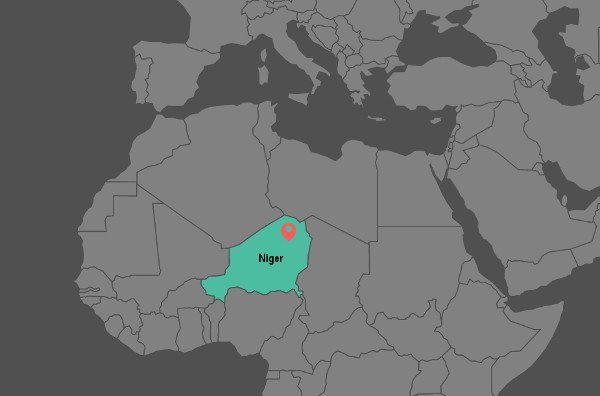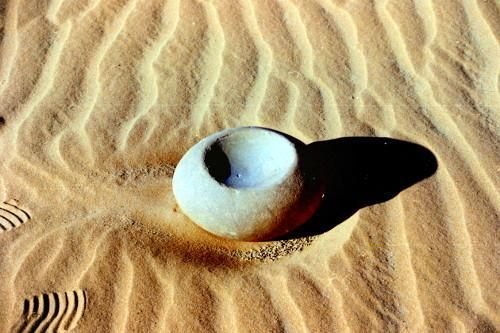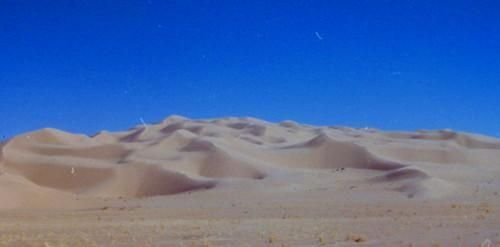This is an authorized translation in English of a post in French by @terresco: Rencontres avec l'Afrique - Les Touareg d'Agadez (Partie 2/2)
As my primary language is not English, there are probably some mistakes in my translation.
Remember that the person who speaks here is NOT me, Vincent Celier (@vcelier), but @terresco, a French guy.

Niger
This post is the continuation of this one and tells the life of a targui of Agadez born in the 50s and that I met by chance at the foot of the mosque of Agadez. He experienced the beauty of the desert from his childhood, the difficult years following the droughts and the political problems due to decolonization. He was at the side of Mano Dayak first at the Paris-Dakar rally and during the Tuareg rebellion in the early 90s.
We find him again in his native village of the Aïr mountains in the early 80s. He had returned to settle there after the many events of his life. A historic drought ruins his hopes of making his family survive and he knows that we will have to leave again ...
... but where to go?
At that time, many went to Libya. Colonel Gaddafi urged the Tuaregs to create a republic. A new chimera for our people, but in our despair we wanted to believe it. My wife became pregnant, the long-awaited event dissuaded us from undertaking this long, difficult and dangerous journey through the desert.
The luck arose, in the form of a Toyota, driven by a Targui. He was bringing a white couple to the desert. They were tourists, they came voluntarily to our dry and isolated region. It was a new concept that we had a little trouble understanding ... tourists. After giving them water and dates, the Targui asked me for the direction of the "crab claw", a magical place where the sea of pink dunes of the Ténéré desert rushes into the half-moon formed by the mountains.

Mano's wife was French, she worked with us. I discovered a new world through it and the tourists we were taking. There were many foreigners coming and going, they loved the desert. The house of Dayak was always full. For my part I loved my new life, I improved my French expression, I had big tips but especially I was considered, respected. We built our house in Agadez, renovated the one of my parents in Aïr and had two sons and a daughter. Those were good years.
Paris Dakar burst into our lives in the mid-80s. We began to do spotting, to make contacts, to install reserves of gasoline, water, spare parts throughout the Ténéré. Everyone came here to film us with big cameras for the TVs of the white countries. The gentleman who looked after them was called Thierry, like you (Thierry Sabine). Unfortunately in 1986 he died in an helicopter crash with other friends; for us it was very hard and even if we then participated in three more Paris-Dakar, something had changed.

I had to hide during those years of misery. We once again took refuge in Aïr. We lived on dates and the sale of jewelry offered to my wife during our good times. In 1993 Mano came back, I immediately joined him and we joined the rebellion. We fought, we even attacked the Arlit mines. I was always at his side and I can say that it was thanks to him that there were no more deaths. He calmed the fires of other leaders who wanted more violence, he began the negotiations with the Nigerien government.
It was me who took him to his plane when he was leaving in 1995 to negotiate the peace treaty with the Nigerien president. They said it was an accident but I do not believe it ... "
His voice breaks, emotion overwhelms him. A Targui is silent but does not cry. I know the rest, everyone knows the rest, the plane that Mano Dayak took fell just after take off and caught fire. They all died, Mano Dayak and those who accompanied him. The various official investigations have concluded at an accident.
The following years saw little ups and downs for the Tuaregs of Agadez. At the beginning of the year 2000, Paris Dakar canceled the four stages in Niger at the very last moment, replacing them with an air bridge to Libya. The hopes of the Tuaregs to boost their tourism economy have been ruined and investments made, gasoline stock, spots, spare parts ... everything has been lost.
This meeting took place in July 2000. I have no idea what Michel has become since. Victim of the uranium he was extracting from Arlit? From the war with the Nigerien army? The arrival of islamist groups in the Sahara? or, I hope, living happily in his Aïr refuge.
It was one of those intense and fleeting encounters as it often happens when traveling. Like many ethnic groups who have remained faithful to their ancestral traditions, the future of the Tuaregs does not appear in the best possible light.
-- @terresco
Encounters with Africa: Ivory Coast, by @terresco
Encounters with Africa: Abidjan, a daily pleasure, by @terresco
Encounters with Africa: The Tuaregs of Agadez, by @terresco
From Cape Town to Mombasa series:
Africa, the long crossing
From Cape Town to Mombasa: South Africa
From Cape Town to Mombasa: Namibia
From Cape Town to Mombasa: Botswana
From Cape Town to Mombasa: Zimbabwe
From Cape Town to Mombasa: Zimbabwe, part 2, by @terresco
From Cape Town to Mombasa: Zimbabwe, part 3, by @terresco
From Cape Town to Mombasa: Zambia, by @terresco
From Cape Town to Mombasa: Malawi, by @terresco
From Cape Town to Mombasa: Tanzania #1, by @terresco
From Cape Town to Mombasa: Tanzania #2, by @terresco
From Cape Town to Mombasa: Tanzania #3, by @terresco
From Cape Town to Mombasa: Tanzania #4, by @terresco
From Cape Town to Mombasa: Kenya, by @terresco
